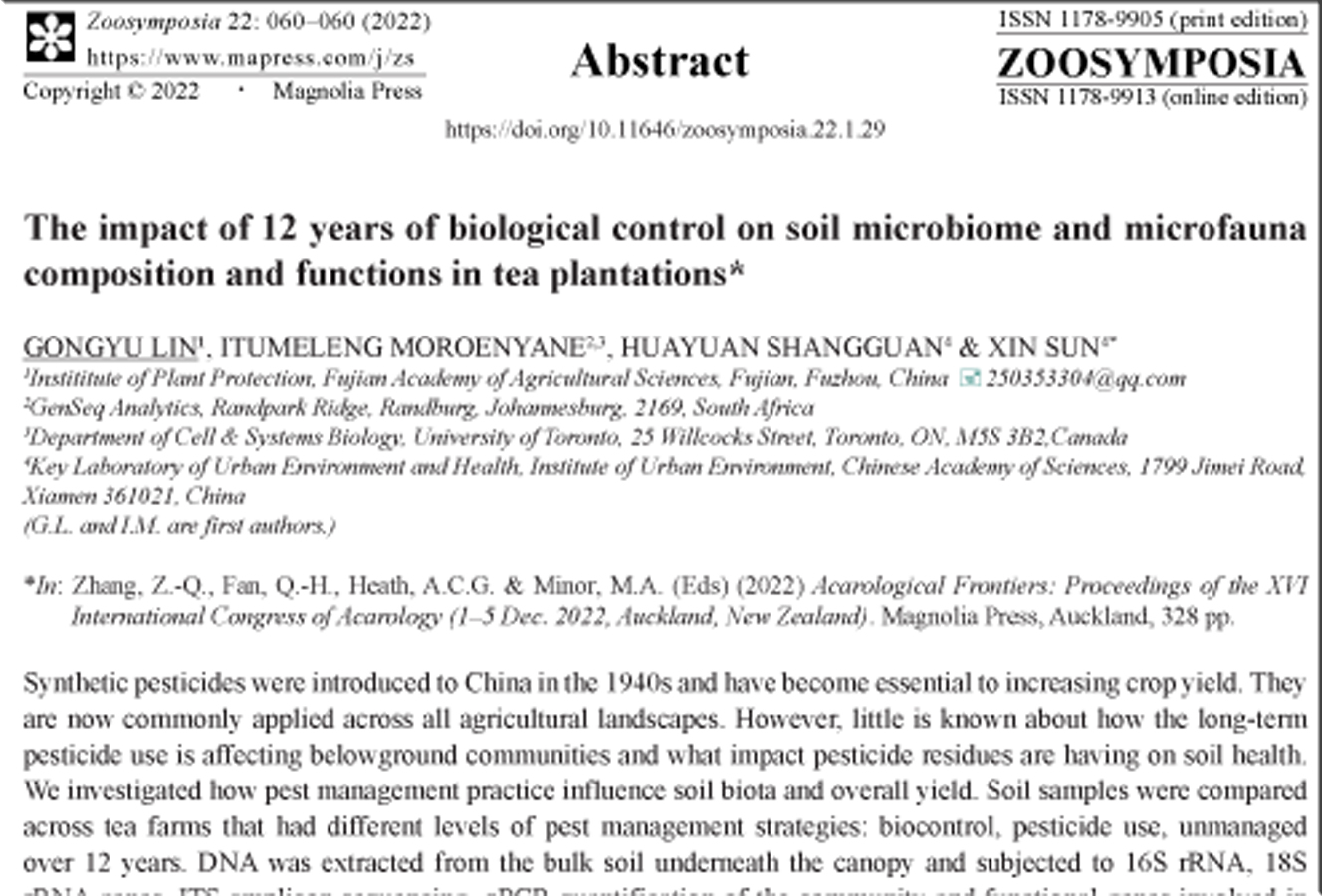Abstract
Synthetic pesticides were introduced to China in the 1940s and have become essential to increasing crop yield. They are now commonly applied across all agricultural landscapes. However, little is known about how the long-term pesticide use is affecting belowground communities and what impact pesticide residues are having on soil health. We investigated how pest management practice influence soil biota and overall yield. Soil samples were compared across tea farms that had different levels of pest management strategies: biocontrol, pesticide use, unmanaged over 12 years. DNA was extracted from the bulk soil underneath the canopy and subjected to 16S rRNA, 18S rRNA genes, ITS amplicon sequencing, qPCR quantification of the community and functional genes involved in the N-cycle. Additionally, the abundance and diversity of soil mites were recorded using traditional methods. The results highlighted that there were significant differences in edaphic properties including total nitrogen, total organic carbon, pH, phosphorus and levels of several pesticides across all treatments. Overall, there were distinct microbial communities associated with each treatment and diversity patterns were significantly influenced by management strategies. Across all gene regions, there was variation in the relative abundance of dominant taxa across treatment. Management influenced the abundance of N-cycling genes with an increased abundance of amoA and nirK in biocontrol and unmanaged farms. Interestingly, we found an increased abundance of fungal pathotrophs in the pesticide treatment. We also found that mite compositions and densities were different across all management strategies. The overall mite density and that of Rhodacaroidea were highest in the pesticide treatment and lowest in the unmanaged farm soil. This work aims to improve our understanding of pest management strategies from a soil biota point of view, to enhance soil health and to promote sustainable tea productions.
References
-

